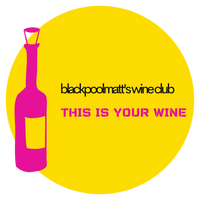Sauvignon Blanc
I have to confess that Sauvignon Blanc is a grape variety I've often been snobbily dismissive of as the aromas can be too obvious and often not that pleasant (after all, cat's pee doesn't sound like a positive adjective...).
But recently I've had to rethink, after tasting several dangerously drinkable yet sophisticated wines made from Sauvignon Blanc. So, why the prejudice and why the rethink?
prejudice: New Zealand
Sauvignon Blanc most likely originates from the Loire Valley in France, where it's famous in appellations such as Sancerre and Pouilly-Fumé for a lean style noted for gunflint aromas. But it's New Zealand that made Sauvignon Blanc globally famous.
The variety was first planted in the late 1960s north of Auckland, and was then subsequently planted in Marlborough (mahrl-bruh) in the early 1970s—the first vines to be planted on the North Island, which had previously been deemed too cold to make wine.
The New Zealand wine industry developed through custom crush facilities, which meant that few producers owned vineyards. Instead, they trucked grapes to the winemaking facility after they were picked, which resulted in extra skin contact. Research has now shown that skin contact with Sauvignon Blanc results in extra phenolics, which is why the wines of Marlborough are so pungent with vegetal and herbaceous aromas of asparagus, tomato leaf, tropical fruit, broom, and, yes, cat's pee.
This is an incredibly popular style, imitated around the world. The wines are immediate, fresh, and distinctive in their pronounced aromas. But they can also be too obvious and even aggressive in their character.
rethink: obscure Loire regions
Not all New Zealand Sauvignon Blanc is like that. Producers in Marlborough are experimenting with native yeasts rather than those cultured to exaggerate Sauvignon Blanc's aromatics. In Central Otago, more restrained styles are made in the cool continental climate.
But sometimes you've just got to return to the original source to understand the wines. Strangely enough, it's not the major Loire regions which have caused me to rethink Sauvignon Blanc, but some of the more obscure ones.

quincy
Up until the 1960s, Quincy (can-see) was the most highly regarded appellation for Sauvignon Blanc; in fact, it was the second appellation to be created in France after Châteauneuf-du-Pape. Its reputation since then has receded, but some producers have kept the flame burning. In 1973, Pierre Ragon took over Domaine Trotereau, which has existed since 1804 and now has a proud place in blackpoolmatt's wine club: the Sauvignon Blanc is such a pleasure to drink, with light herbaceous characteristics and refreshingly high acidity. Just south of Sancerre, it presents a great-value, high-quality alternative. And it's a wine that in these travel-less times takes me back to wine bars in the Loire, where Quincy is gleefully guzzled by the glass.
coteaux du giennois
This is an appellation perhaps even more obscure than Quincy. Coteaux du Giennois (kot-oh doo gee-en-noih) lies north of Sancerre and Pouilly-Fumé on the banks of the Loire river. There are just 150ha of plantings which include Pinot Noir and Gamay as well as Sauvignon Blanc. Its history goes back to medieval times, but it is certainly not a well-known region.
So I was excited to try a wine from Florian Roblin, who bought the Champ Gibault vineyard in 2006. And it reminded me once again that Sauvignon Blanc is capable of expressing a precise sense of place, with its refined, precise structure and subtle concentration. Aged for seven months on the lees, this wine is more about place and the variety than it is about winemaking. A friend recently picked up a bottle and remarked how crisp and elegant the label was, to which I replied that's exactly what the wine itself is like.
sémillon blends
Sauvignon Blanc is also widely grown in Bordeaux, where both dry and sweet wines are made. Plantings have increased due to the global popularity of the variety, and the wines are often made in a generic, international style. But there is serious wine made too. Domaine de l'Alliance is a producer which makes highly-regarded Sauternes as well as an excellent dry white blend of Sémillon and Sauvignon Blanc which is rich and creamy but very fresh. White Bordeaux blends such as these are made globally and to a high standard in regions such as Margaret River, Stellenbosch, and Napa. Think of them as a more aromatic alternative to white Burgundy.
Dry or sweet, cool or warm climate, there is clearly much more to Sauvignon Blanc than the pungent, overt style it's most often associated with. I'm happy to keep exploring these wines which are far more diverse than the reputation of Sauvignon Blanc suggests.
for more on Sauvignon Blanc, listen to the Matthew’s World of Wine and Drink podcast on spotify
